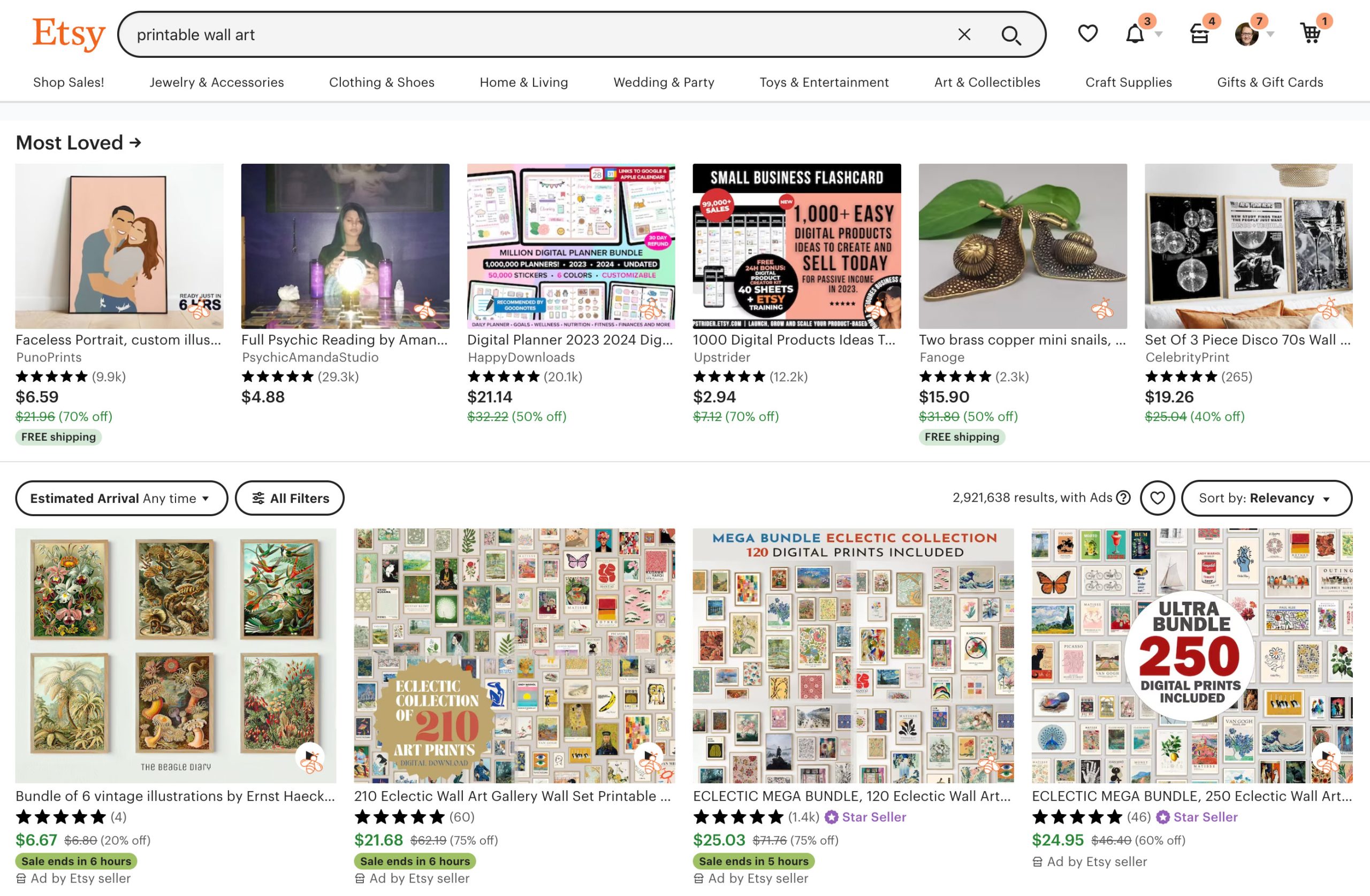Etsy is a popular platform for creatives to sell unique, handmade items. But to be successful on Etsy, understanding the platform’s search engine and mastering keyword search is crucial. This blog post aims to provide you with a comprehensive understanding of Etsy’s search algorithm and give you tips on how to efficiently use keywords to increase your product visibility and ultimately, your sales.
Understanding Etsy’s Search Algorithm
Etsy’s search engine uses an algorithm to match a user’s search query to relevant listings on the platform. The algorithm considers several factors when displaying search results, including listing relevancy and quality score, customer behavior, and contextual information. Therefore, to rank higher in Etsy’s search results, you need to align your product listings with these factors, and the most effective way to do that is through appropriate keyword usage.
Etsy Keywords Relevance
Your chosen keywords should be relevant to what you are selling. When a buyer types a query into the Etsy search bar, the algorithm checks your titles, tags, and product descriptions for matching keywords. As such, you should aim to include keywords that accurately describe your item and that your potential buyers would likely use in their search queries.
To search efficiently for Etsy keywords, you can follow these steps:
- Use Etsy’s Search Bar: The first step in keyword research is understanding what your potential customers are searching for. One of the easiest ways to do this is by using Etsy’s search bar. As you type a keyword related to your product, you’ll notice that Etsy automatically suggests search terms. These are popular phrases that buyers have been using to search for items. These suggestions can give you insights into what keywords you should be using in your product descriptions and tags.
- Check Out the Competition: Look at successful shops that sell similar products and take note of the keywords they use in their titles and product descriptions. This can give you a sense of the keywords that are working in your specific niche.
- Use Etsy Rank or Similar Tools: Tools like Etsy Rank can help you understand keyword volume and competition. These tools show you how many people are searching for a particular keyword and how many listings are using it. This information can help you identify high-volume, low-competition keywords.
- Long-Tail Etsy Keywords: Long-tail keywords are more specific and often less competitive than general keywords. They may have a lower search volume, but they can attract a more targeted audience, leading to higher conversion rates.
To use the Etsy keywords you found in a useful way, instead, you can follow these steps I prepared for you:
- Optimize Your Titles: The first few words of your listing titles are crucial. Make sure to include your most important keyword towards the beginning of the title. However, remember that the title still needs to read naturally and should accurately describe your product.
- Leverage Your Tags: Etsy gives you 13 tags to use for each listing. Make sure to use all of them and include variations of your keywords. This can include synonyms, different word orders, and long-tail keywords.
- Use Keywords in Your Descriptions: While the first few lines of your product description are crucial for capturing your customer’s attention, the rest of the description should also be used strategically. Try to naturally incorporate your chosen keywords throughout the description.
- Be Specific: Generic keywords will have a lot of competition. By being more specific with your keywords, you can reach customers who are looking for exactly what you are selling.
- Keep Up with Trends: Search behaviors change over time. Make sure to regularly update your keywords to reflect current trends and seasonal changes.
- Avoid Keyword Stuffing: While it’s important to use your keywords throughout your listing, it’s equally crucial to avoid keyword stuffing. Etsy’s algorithm is sophisticated enough to identify when keywords are being used excessively, which can result in your listing ranking lower. Instead, aim for a balanced and natural use of keywords in your product descriptions and tags.
- Use a Mix of Broad and Niche Keywords: While niche keywords can help you reach a more targeted audience, broader keywords can increase your listing’s visibility among a wider audience. Utilize a mix of both to maximize your listing’s potential reach.
- Pay Attention to Your Shop’s SEO: SEO, or Search Engine Optimization, isn’t just for your individual listings. It’s also important for your Etsy shop as a whole. Make sure your shop title and shop announcement contain relevant keywords that represent what you’re selling.
- Track Your Progress: Once you have optimized your listings with keywords, it’s important to track your progress. Monitor your Etsy stats to see how your listings are performing and identify which keywords are driving the most traffic. Use this information to further optimize your listings.
- Experiment: Don’t be afraid to experiment with different keywords. If a particular keyword isn’t driving much traffic, try replacing it with a different one. Remember, successful keyword optimization is often a matter of trial and error.
Understanding Etsy’s search algorithm and mastering keyword usage are fundamental components of achieving success on the platform. It takes time, patience, and constant tweaking to find the right mix of keywords that resonate with your potential customers and meet the demands of Etsy’s search algorithm. But once you get it right, the results can be greatly rewarding.
Remember that Etsy’s search algorithm is always evolving, so it’s crucial to stay up-to-date with the latest changes and adapt your keyword strategies accordingly. By efficiently using keywords, you can enhance your visibility on the platform, reach a larger audience, and drive more sales.
With the right approach, your Etsy keywords search doesn’t need to be a daunting task. It can be an exciting opportunity to better understand your customers, meet their needs, and grow your business.











